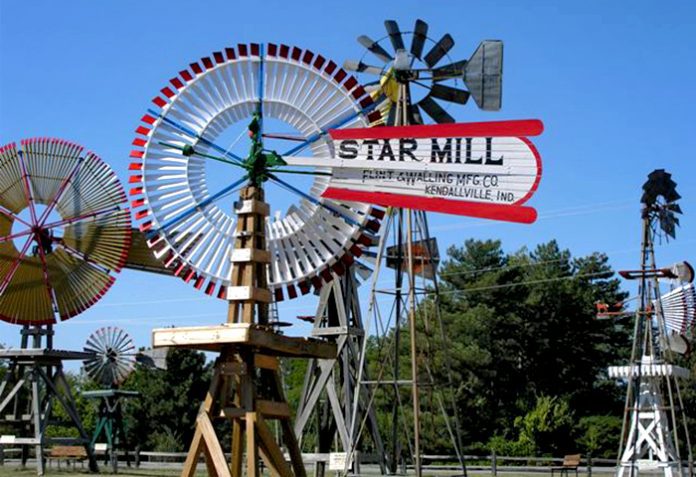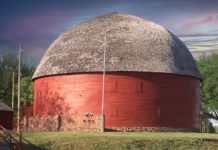Before gargantuan, high-tech turbines dotted Oklahoma’s plains, pioneers harnessed wind energy with wooden-and-metal contraptions that allowed them to survive. Many are still in use today.
That slice of history is chronicled with real-life and functional exhibits at the Shattuck Windmill Museum. Opened in 1996, the project was the dream of Phillis Ballew and her husband, Dan, who showed how windmills were an integral part of life in Oklahoma’s early days.
“They’re important because without these windmills this area wouldn’t have ever been settled,” says Sue Schoenhals, a museum volunteer and board member. “The main thing they did was pump water up to where they needed it, and later they would use them to generate electricity. They also were used to provide water for railroad steam engines.”
Ranching, still part of life in western Oklahoma, wouldn’t have been possible without cattle having regular access to water.
“The area we’re in is quite arid, so the only place you’d find water was in creeks, springs and streams,” museum volunteer Jim Schoenhals says. “When that land got settled into small parcels, often you didn’t have water running through your property. For animals to survive, you had to have windmills. And they’re still used today for cattle in remote areas.”
Among the most unique windmills is one from an area settled more than a century ago.
“It came from a ranch near Freedom and the Alabaster Caverns area,” Jim Schoenhals says. “The guy came in and laid claim to the land and then went to Arkansas City in Kansas, where there was a windmill manufacturing company, and we have that very windmill. I’ve heard there are only three of that type still in existence.”
Most of the museum’s windmills date from the late 1800s to the early 20th century and are maintained by volunteers.
“The lady who started it – it was a romantic thing to her as far as how important they were and how much they are connected with life here,” Sue Schoenhals says. “And they are kind of fascinating to watch. Some are quite pretty.”
In the museum’s collection of 40 windmills are the 5-foot Star Zephyr and the 18-foot Samson, along with a fully restored and furnished homestead giving visitors a glimpse of how early Oklahomans lived.
That experience is popular with visitors from abroad. Last year, people from 30 foreign countries signed the museum’s guestbook.
“I find it a treat to be there at the park when we have visitors from other countries,” Jim Schoenhals says. “I’ve visited with people from Australia, Great Britain and China. You never know who is going to show up.”
The free museum, at Oklahoma 15 and U.S. 283, is open year-round and includes a gift shop and visitor’s center from 10 a.m. to 4 p.m. weekdays from April to mid-November. It features exhibits and 14 more windmills inside.




























